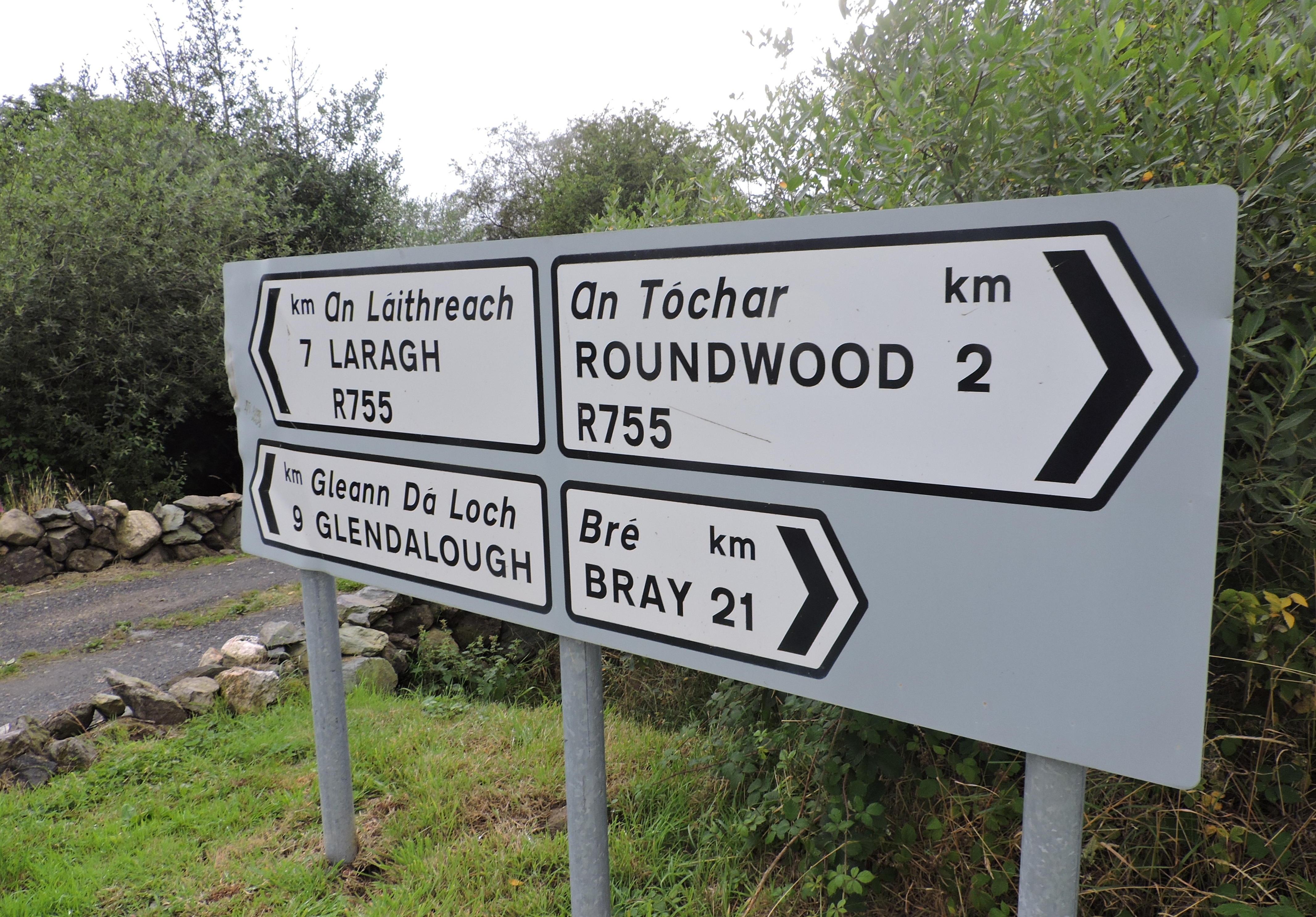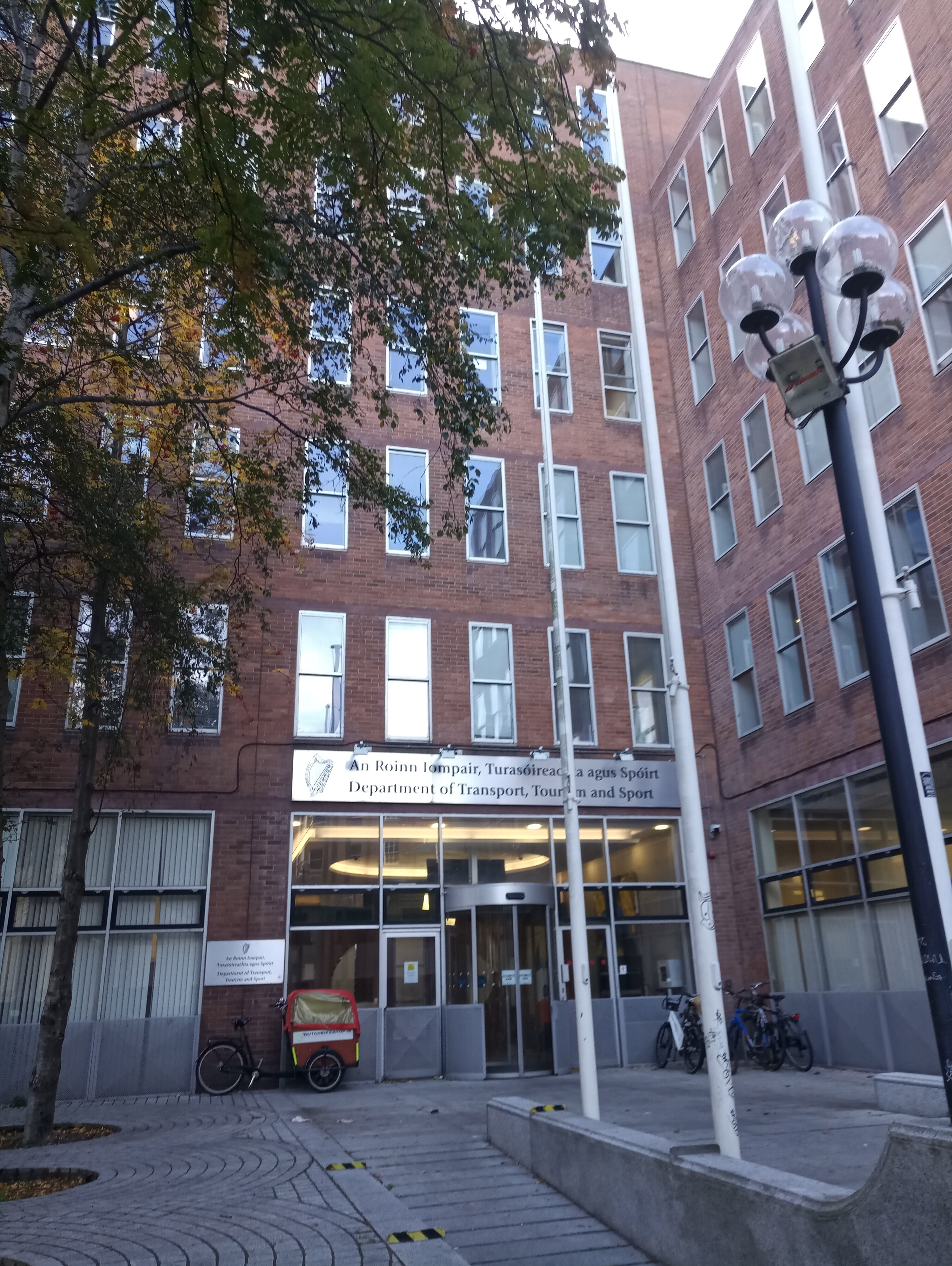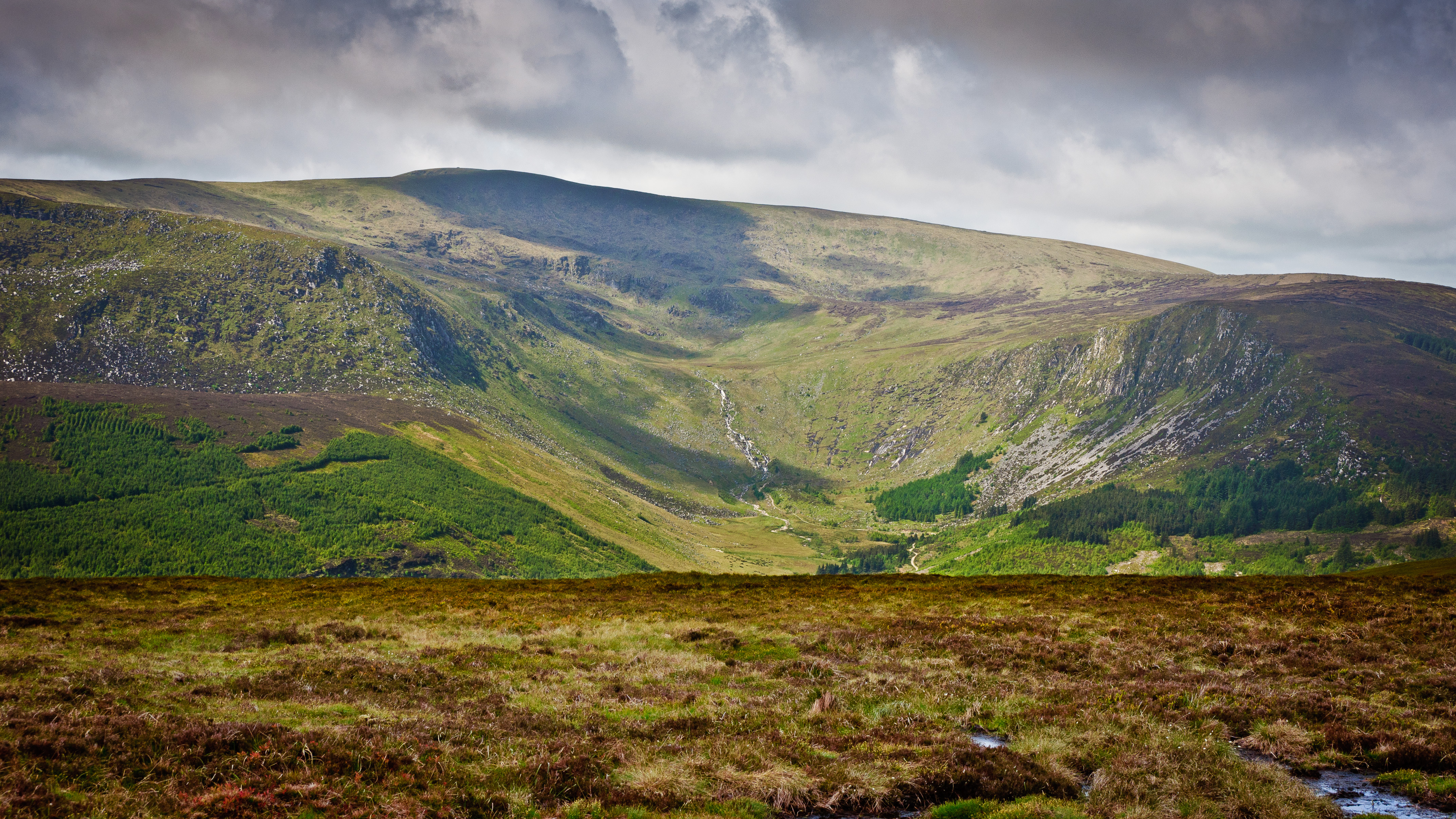|
R755 Road
The R755 road is a regional road in Ireland. It runs for its entire length in County Wicklow. From the village of Kilmacanogue on the N11 national primary road it goes north/south for to the town of Rathdrum. Route From the N11 it goes west through the ''Rocky Valley'' and then turns south and rises sharply at the foot of the Sugar Loaf Mountain and crosses the ''Calary Bog'' to a junction with the eastern end of the ''Sally Gap'' road ( R759) north of Roundwood village. It continues south through Roundwood and the hamlet of Annamoe to Laragh where it meets the Military Road and the Wicklow Gap Road. From Laragh it follows the Avonmore River for through dense conifer forests and oak woods before terminating in the town of Rathdrum at a junction with the R752. Like the other main regional roads in the Wicklow Mountains, the R115, R759, R756, R752 and R747 this road passes through some wonderful scenery. See also *Roads in Ireland *National primary road *Nation ... [...More Info...] [...Related Items...] OR: [Wikipedia] [Google] [Baidu] |
Roundwood
Roundwood, historically known as Tóchar ( ga, an Tóchar , meaning 'the causeway'), is a village in County Wicklow, Ireland. It was listed as having a population of 948 in the 2016 census. Geography Roundwood is located where the R755 road joins the R764 and R765. The R755 is part of the main route from Dublin to Glendalough in the Wicklow Mountains. At 238 metres above sea level, Roundwood is one of the highest villages in Ireland. Vartry Reservoir Lakes (reservoirs built in the 1860s) are close by. History Roundwood has a close association with two former Presidents of Ireland, Seán T. O'Kelly who lived locally, and Erskine Hamilton Childers, who, with other family members, is buried in Derrylossary Anglican churchyard near the village. Sport The local Gaelic football and ladies' Gaelic football club is An Tóchar GAA. Twin towns — sister cities Roundwood is twinned with the village of Spézet, in Brittany, northwestern France France (), ... [...More Info...] [...Related Items...] OR: [Wikipedia] [Google] [Baidu] |
R756 Road (Ireland)
The R756 road is a regional road in Ireland running west–east from Dunlavin to Laragh. Its entire length is within County Wicklow crossing east–west through the '' Wicklow Gap'' ( ga, Bearna Chill Mhantáin). Route From Dunlavin it heads northeast, intersecting the N81 national secondary road near the village of Hollywood. It then heads southeast, rising through the West Wicklow Mountains to the Wicklow Gap, the highest point on the road at 470m, before descending through the ''Glandasan Valley''. In this valley it passes through old mine-works to its junction with the R757 in the outskirts of Glendalough and continues for a further 2 km to Laragh, where it terminates at a junction with the R755 and the ''Military Road''. The section from Hollywood to Laragh is known as the ''Wicklow Gap Road'' ( ga, Bóthar Bhearna Chill Mhantáin) and it is one of only two routes crossing the Wicklow Mountains from east to west, the other being the road through the ''Sally G ... [...More Info...] [...Related Items...] OR: [Wikipedia] [Google] [Baidu] |
Department Of Transport (Ireland)
The Department of Transport ( ga, An Roinn Iompair) is a department of the Government of Ireland that is responsible for transport policy and overseeing transport services and infrastructure. The department is led by the Minister for Transport who is assisted by one Minister of State. Departmental team The official headquarters and ministerial offices of the department are in Leeson Lane, Dublin. It also has offices in Killarney and Loughrea. The departmental team consists of the following: * Minister for Transport: Eamon Ryan, TD ** Minister of State for International and Road Transport and Logistics: Hildegarde Naughton, TD *Secretary General of the Department: Ken Spratt Affiliated bodies State Agencies Among the State Agencies that report to, are appointed by the Minister, or are otherwise affiliated to the department are: * National Transport Authority * Road Safety Authority * Transport Infrastructure Ireland *Irish Aviation Authority * Irish Coast Guard *Commissi ... [...More Info...] [...Related Items...] OR: [Wikipedia] [Google] [Baidu] |
Clara, County Wicklow
Clara or Clara More () is a townland and small clachan consisting of a bridge over the Avonmore River and a number of buildings in County Wicklow in Ireland. The village is situated halfway between Laragh and Rathdrum on the R755 road, and is sometimes referred to as the 'smallest village in Ireland'. The most prominent structures locally include the settlement's narrow six-arch road bridge (built c.1680), and the nearby Clara Vale Catholic church (built c.1799). The church is dedicated to Saint Patrick and Saint Killian and underwent significant renovations in the late 1830s. The local Vale of Clara Vale of Clara () is a national nature reserve of approximately located in County Wicklow, Ireland. It is managed by the Irish National Parks & Wildlife Service, part of the Department of Housing, Local Government and Heritage. Features The V ... Nature Reserve is thought to be one of the oldest hardwood forests in Ireland. References Towns and villages in County Wickl ... [...More Info...] [...Related Items...] OR: [Wikipedia] [Google] [Baidu] |
National Secondary Road
A national secondary road ( ga, Bóthar Náisiúnta den Dara Grád) is a category of road in Ireland. These roads form an important part of the national route network but are secondary to the main arterial routes which are classified as national primary roads. National secondary roads are designated with route numbers higher than those used for primary roads, but with the same "N" prefix. Routes N51 and higher are all national secondary roads. National secondary roads have a default speed limit of 100 km/h (62.5 mph) as, along with national primary routes, they fall into the speed limit category of ''national roads''. There are 2657 km of national secondary roads in Ireland, making up slightly over 50% of the entire national route (national primary and national secondary) network. TII: ... [...More Info...] [...Related Items...] OR: [Wikipedia] [Google] [Baidu] |
National Primary Road
A national primary road ( ga, Bóthar príomha náisiúnta) is a road classification in Ireland. National primary roads form the major routes between the major urban centres. There are 2649 km of national primary roads. This category of road has the prefix "N" followed by one or two digits. Motorways are prefixed "M" followed by one or two digits. Description The routes numbered N1–N11 radiate anti-clockwise from Dublin, with those in the range N12–N26 being cross-country roads. Routes numbered N27–N33 are much shorter roads than the majority of the network: they link major pieces of infrastructure (such as ports and airports) to the network, such as the N33 being a feeder route to a major motorway (the M1). Finally, the N40 and the M50 are bypass roads of Ireland's two largest cities, Cork and Dublin. National secondary roads (see next section) are numbered under the same scheme with higher numbers (from N51 on). On road signage, destinations served but not on the ... [...More Info...] [...Related Items...] OR: [Wikipedia] [Google] [Baidu] |
Roads In Ireland
The island of Ireland, comprising Northern Ireland and the Republic of Ireland, has an extensive network of tens of thousands of kilometres of public roads, usually surfaced. These roads have been developed and modernised over centuries, from trackways suitable only for walkers and horses, to surfaced roads including modern motorways. Driving is on the left-hand side of the road. The major routes were established before Irish independence and consequently take little cognisance of the border other than a change of identification number and street furniture. Northern Ireland has had motorways since 1962, and has a well-developed network of primary, secondary and local routes. The Republic started work on its motorway network in the early 1980s; and historically, the road network there was once somewhat less well developed. However, the Celtic Tiger economic boom and an influx of European Union structural funding, saw national roads and regional roads in the Republic come up to i ... [...More Info...] [...Related Items...] OR: [Wikipedia] [Google] [Baidu] |
R747 Road (Ireland)
The R747 road is a regional road in Ireland running north-west/south-east from the M9 near Ballitore in County Kildare to Arklow in County Wicklow, a distance of . File:IMG_R747westward5075w.jpg, 350px, The R747 road poly 1606 580 1610 692 1910 684 1926 632 2000 630 2006 556 Tinahely poly 1626 816 1608 874 1614 936 1994 926 1994 868 1950 854 1962 808 1778 802 Shillelagh From its junction with the M9 it heads east to the former N9. It crosses this at a staggered junction and enters County Wicklow almost immediately and southeast it crosses the N81 in the town of Baltinglass. It continues southeast through Kiltegan before crossing into County Carlow for a short distance where it passes through Hacketstown. Back in County Wicklow it crosses the Wicklow Way and enters the southern end of the Wicklow Mountains near Tinahely. From Tinahely it heads northwest for to Aughrim, and then east along the valley of Aughrim River to Woodenbridge where it is joined by the R752. ... [...More Info...] [...Related Items...] OR: [Wikipedia] [Google] [Baidu] |
Wicklow Mountains
The Wicklow Mountains (, archaic: '' Cualu'') form the largest continuous upland area in the Republic of Ireland. They occupy the whole centre of County Wicklow and stretch outside its borders into the counties of Dublin, Wexford and Carlow. Where the mountains extend into County Dublin, they are known locally as the Dublin Mountains (''Sléibhte Bhaile Átha Cliath''). The highest peak is Lugnaquilla at . The mountains are primarily composed of granite surrounded by an envelope of mica-schist and much older rocks such as quartzite. They were pushed up during the Caledonian orogeny at the start of the Devonian period and form part of the Leinster Chain, the largest continuous area of granite in Ireland and Britain. The mountains owe much of their present topography to the effects of the last ice age, which deepened the valleys and created corrie and ribbon lakes. Copper and lead have been the main metals mined in the mountains and a brief gold rush occurred in the 18th centur ... [...More Info...] [...Related Items...] OR: [Wikipedia] [Google] [Baidu] |
R752 Road (Ireland)
The R752 road is a regional road in County Wicklow, Ireland. From its junction with the R772 in Rathnew on the outskirts of Wicklow Town it takes a generally south-westerly route to its junction with the R747 in the village of Woodenbridge, where it terminates. The road is long. En route it passes through Glenealy, Rathdrum, The Meeting of the Waters and Avoca. It closely follows the route of the Dublin – Wexford - Rosslare Europort railway line and at one stage it was part the main road from Dublin to Wexford, then called the T34. See also *Roads in Ireland *National primary road *National secondary road ReferencesRoads Act 1993 (Classification of Regional Roads) Order 2006– Department of Transport The Department for Transport (DfT) is a department of His Majesty's Government responsible for the English transport network and a limited number of transport matters in Scotland, Wales and Northern Ireland that have not been devolved. The ... {{coord, 52, ... [...More Info...] [...Related Items...] OR: [Wikipedia] [Google] [Baidu] |
Sessile Oak
''Quercus petraea'', commonly known as the sessile oak, Cornish oak, Irish Oak or durmast oak, is a species of oak tree native to most of Europe and into Anatolia and Iran. The sessile oak is the national tree of Ireland, and an unofficial emblem in Wales and Cornwall. Description The sessile oak is a large deciduous tree up to tall, in the white oak section of the genus (''Quercus'' sect. ''Quercus'') and similar to the pedunculate oak (''Q. robur''), with which it overlaps extensively in range. The leaves are long and broad, evenly lobed with five to six lobes on each side and a petiole. The male flowers are grouped into catkins, produced in the spring. The fruit is an acorn long and broad, which matures in about six months. Comparison with pedunculate oak Significant botanical differences from pedunculate oak (''Q. robur'') include the stalked leaves, and the stalkless (sessile) acorns from which one of its common names is derived. It occurs i ... [...More Info...] [...Related Items...] OR: [Wikipedia] [Google] [Baidu] |
Conifer
Conifers are a group of cone-bearing seed plants, a subset of gymnosperms. Scientifically, they make up the division Pinophyta (), also known as Coniferophyta () or Coniferae. The division contains a single extant class, Pinopsida. All extant conifers are perennial woody plants with secondary growth. The great majority are trees, though a few are shrubs. Examples include cedars, Douglas-firs, cypresses, firs, junipers, kauri, larches, pines, hemlocks, redwoods, spruces, and yews.Campbell, Reece, "Phylum Coniferophyta". Biology. 7th. 2005. Print. P. 595 As of 1998, the division Pinophyta was estimated to contain eight families, 68 genera, and 629 living species. Although the total number of species is relatively small, conifers are ecologically important. They are the dominant plants over large areas of land, most notably the taiga of the Northern Hemisphere, but also in similar cool climates in mountains further south. Boreal conifers have many wintertime ada ... [...More Info...] [...Related Items...] OR: [Wikipedia] [Google] [Baidu] |



.jpg)

.png)

